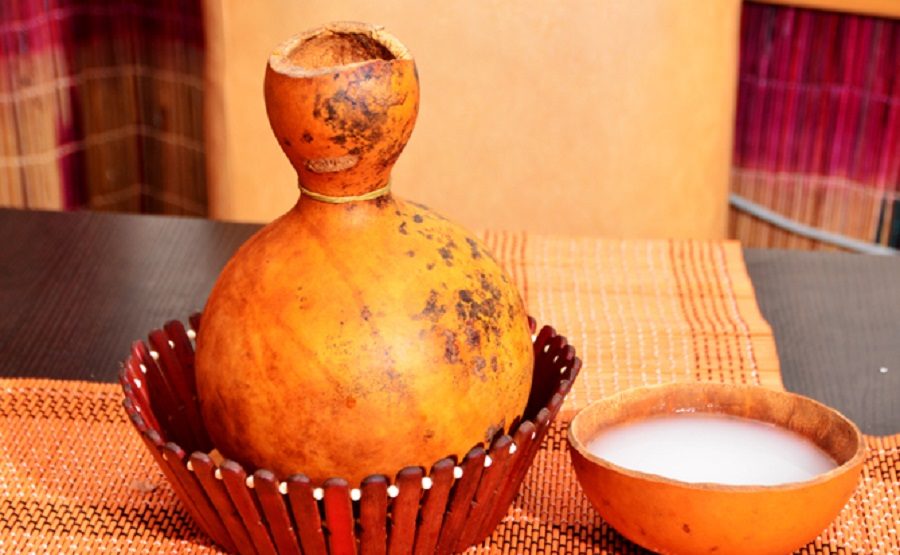
Palm wine is a hugely popular beverage in many parts of West and Central Africa and consumed by millions of people in both regions.
Palm wine has a lovely presence and tastes like something between beer and grape wine.
Known by several names, it is commonly referred to as ‘pami’, ‘emu’ and ‘nkwu’ in Nigeria, ‘nsamba’ in Congo, ‘nsfufuo’ in Ghana and ‘matango’ in Cameroun.
Palm wine enjoys a strong cultural identity and significance in these countries and is usually the preferred drink during traditional ceremonies and events (such as weddings and funerals).
Palm wine is a cloudy white drink produced from the sap of various species of palm trees which are abundant in Africa’s dense tropical rain forest regions.
It is traditionally extracted by a ‘tapper’ and the quantity of sap that can be taken from one palm tree depends on the mode of extraction, the palm species, season and the fertility of the soil.
Freshly collected palm wine is very sweet and non-alcoholic. However, fermentation begins naturally and immediately after collection. As time progresses, the wine becomes more alcoholic and has some sourness and acidity to it.
Palm-wine is traditionally a social drink of the rural people, but in recent times, it has also become a favourite among city dwellers. The palm trees from which palm-wine is derived grow extensively in the southern part of the country, especially the riverine areas. Much of the palm-wine wastes away through lack of proper preservation method, because it goes sour after twenty-four (24) hours if not properly preserved by scientific means.
A preservation method for palm-wine has been perfected locally. It involves pasteurizing and bottling of the palm-wine, which increases its shell-life to over six months.
The preservation and bottling of the palm wine is achieved by arresting the activities of yeast, thus stopping the fermentation of the product.
The preserved and bottled palm-wine, so obtained, becomes considerably stable with a maximum alcoholic content of four percent (4%) v/v. and can be cheaply bottled in beer bottles and corked with crown corks.
This method of palm-wine preservation makes it more hygienic and consequently more attractive to the city dwellers. The equipment required is simple to operate and is fabricated locally.
The demand for bottled palm wine cuts across social, economic and religious strata. The demand for bottled palm wine is estimated at 29.2 million litres per annum. The current level of supply is about twenty percent (20%) of the demand estimate.























